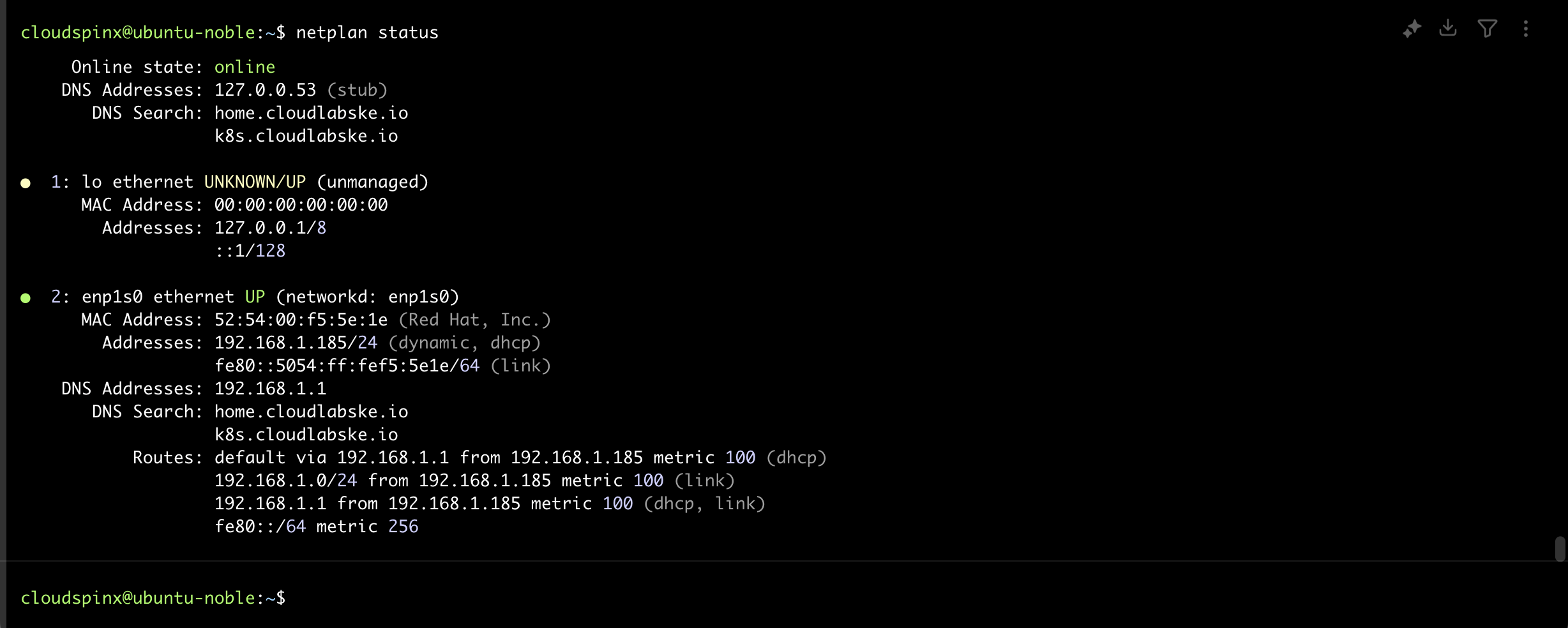In this tutorial, I’ll teach you how to install a secondary IP address on Ubuntu 24.04|22.04|20.04, both temporarily and permanently. Transmission Control Protocol/Internet Protocol (TCP/IP) is a set of protocols that allows computers to communicate with one another. Despite its name, the stack includes a variety of protocols, including IP, TCP, UDP, ICMP, DNS, SMTP, ARP, and many others. The IP protocol is in charge of a host’s logical addressing, which allows packets to be transferred from one host to another.
Each device on the network is given a unique IP address for this purpose, and many addresses might be issued to the same device. In addition to the IP addressing protocol at the network layer, a protocol at the transport layer, such as the TCP and UDP protocols, will be required for a host to access a service offered on another host. This communication is carried out via these protocols through network ports. To access a service, in addition to establishing a source and destination IP, source and destination ports will be used.
Need for Secondary IPs in a Linux system?
Here are the reasons why you need multiples IP addresses:
- To set up name servers.
- Assign separate IP addresses to different services.
- Installing an SSL certificate on a website and hosting numerous SSL sites without the use of virtual hosts is possible.
- Separate IP addresses are used to host programs.
There are three main options to configure IP addresses on Ubuntu 24.04|22.04|20.04
1. Configuring Secondary IP Address Permanently
- Using Netplan
- Configuring Manually
- Using NMCLI
2. Configuring Secondary IP Addresses Temporarily
You can temporarily add a secondary IP address to your Ubuntu 24.04|22.04|20.04 system using the syntax below. When you use this approach to install a secondary IP, it will persist until the next system reboot.
Syntax:
ip addr add <ip-address> dev <interface-name>Delete the above IP as follows:
sudo ip addr del <ip-address> dev <interface-name>Configuring Secondary IP Addresses Permanently
Configuring IP addresses permanently on Ubuntu can be achieved through the following ways:
Option 1: Configure Secondary IP Address using Netplan
When using Netplan, an static or secondary IP address can be added to your Ubuntu system by editing /etc/netplan/50-netcfg.yaml file.
First of all, issue the following command to check current IP address of the system:
$ ip a
1: lo: <LOOPBACK,UP,LOWER_UP> mtu 65536 qdisc noqueue state UNKNOWN group default qlen 1000
link/loopback 00:00:00:00:00:00 brd 00:00:00:00:00:00
inet 127.0.0.1/8 scope host lo
valid_lft forever preferred_lft forever
inet6 ::1/128 scope host
valid_lft forever preferred_lft forever
2: enp0s8: <BROADCAST,MULTICAST,UP,LOWER_UP> mtu 1500 qdisc fq_codel state UP group default qlen 1000
link/ether 08:00:27:e0:af:44 brd ff:ff:ff:ff:ff:ff
inet 192.168.33.10/24 brd 192.168.33.255 scope global enp0s8
valid_lft forever preferred_lft forever
inet6 fe80::a00:27ff:fee0:af44/64 scope link
valid_lft forever preferred_lft foreverOr you can also use the following:
$ ifconfig
enp0s8: flags=4163<UP,BROADCAST,RUNNING,MULTICAST> mtu 1500
inet 192.168.33.10 netmask 255.255.255.0 broadcast 192.168.33.255
inet6 fe80::a00:27ff:fee0:af44 prefixlen 64 scopeid 0x20<link>
ether 08:00:27:e0:af:44 txqueuelen 1000 (Ethernet)
RX packets 16 bytes 1400 (1.4 KB)
RX errors 0 dropped 0 overruns 0 frame 0
TX packets 51 bytes 4286 (4.2 KB)
TX errors 0 dropped 0 overruns 0 carrier 0 collisions 0
lo: flags=73<UP,LOOPBACK,RUNNING> mtu 65536
inet 127.0.0.1 netmask 255.0.0.0
inet6 ::1 prefixlen 128 scopeid 0x10<host>
loop txqueuelen 1000 (Local Loopback)
RX packets 306 bytes 31120 (31.1 KB)
RX errors 0 dropped 0 overruns 0 frame 0
TX packets 306 bytes 31120 (31.1 KB)
TX errors 0 dropped 0 overruns 0 carrier 0 collisions 0As you can see from the output above, the current IP address of the system is 192.168.33.10 on NIC (Network Interface Controller) enp0s8.
If you don’t have Netplan tool installed on your system, you can the following command to install it:
sudo apt install netplan.ioNow you can use vim editor or any other editor of your choice to edit /etc/netplan/50-netcfg.yaml file. If the vim editor is not installed you can also install as shown below:
#install vim editor
sudo apt install vim
#edit the file
sudo vim /etc/netplan/01-netcfg.yamlNow you can add the new IP address as shown below. In this guide, I will add secondary IP 192.168.33.15.
network:
version: 2
renderer: networkd
ethernets:
enp0s8:
addresses:
- 192.168.33.10/24
- 192.168.33.15/24
nameservers:
addresses: [8.8.8.8, 1.1.1.1]Then apply the changes:
sudo netplan try
sudo netplan applyNow, confirm if the IP address has been added:
$ ip a
1: lo: <LOOPBACK,UP,LOWER_UP> mtu 65536 qdisc noqueue state UNKNOWN group default qlen 1000
link/loopback 00:00:00:00:00:00 brd 00:00:00:00:00:00
inet 127.0.0.1/8 scope host lo
valid_lft forever preferred_lft forever
inet6 ::1/128 scope host
valid_lft forever preferred_lft forever
2: enp0s8: <BROADCAST,MULTICAST,UP,LOWER_UP> mtu 1500 qdisc fq_codel state UP group default qlen 1000
link/ether 08:00:27:e0:af:44 brd ff:ff:ff:ff:ff:ff
inet 192.168.33.10/24 brd 192.168.33.255 scope global enp0s8
valid_lft forever preferred_lft forever
inet 192.168.33.15/24 brd 192.168.33.255 scope global secondary enp0s8
valid_lft forever preferred_lft forever
inet6 fe80::a00:27ff:fee0:af44/64 scope link
valid_lft forever preferred_lft foreverOption 2: Configure Secondary IP Address using NMCLI
On an Ubuntu 24.04/22.04/20.04 system, we can also utilize the Network Manager CLI tool to add a secondary IP address.
Run the following to install NMCLI tool:
sudo apt install network-managerExamine the network connection profiles that are already in place:
$ nmcli device show
GENERAL.DEVICE: enp0s8
GENERAL.TYPE: ethernet
GENERAL.HWADDR: 02:70:58:87:E8:B4
GENERAL.MTU: 1500
GENERAL.STATE: 10 (unmanaged)
GENERAL.CONNECTION: --
GENERAL.CON-PATH: --
WIRED-PROPERTIES.CARRIER: on
IP4.ADDRESS[1]: 10.0.2.15/24
IP4.GATEWAY: 10.0.2.2
IP4.ROUTE[1]: dst = 0.0.0.0/0, nh = 10.0.2.2, mt = 100
IP4.ROUTE[2]: dst = 10.0.2.0/24, nh = 0.0.0.0, mt = 0
IP4.ROUTE[3]: dst = 10.0.2.2/32, nh = 0.0.0.0, mt = 100
IP6.ADDRESS[1]: fe80::70:58ff:fe87:e8b4/64
IP6.GATEWAY: --
IP6.ROUTE[1]: dst = fe80::/64, nh = ::, mt = 256
GENERAL.DEVICE: lo
GENERAL.TYPE: loopback
GENERAL.HWADDR: 00:00:00:00:00:00
GENERAL.MTU: 65536
GENERAL.STATE: 10 (unmanaged)
GENERAL.CONNECTION: --
GENERAL.CON-PATH: --
IP4.ADDRESS[1]: 127.0.0.1/8
IP4.GATEWAY: --
IP6.ADDRESS[1]: ::1/128
IP6.GATEWAY: --
IP6.ROUTE[1]: dst = ::1/128, nh = ::, mt = 256After locating the interface for adding a secondary IP address, we proceed to add the IP address as shown below:
sudo nmcli con add con-name "Network2" \
type ethernet \
ifname enp0s8 \
ipv4.address 192.168.33.20/24 \
ipv4.gateway 192.168.33.1 \
ipv4.method manual \
connection.autoconnect yesNow check network creation:
$ nmcli connection show
NAME UUID TYPE DEVICE
Network2 35d0b0a5-edbc-4aec-93c3-41326c4ee8dd ethernet -- The secondary IP is assigned using the +ipv4.addresses option:
sudo nmcli con mod Network2 +ipv4.addresses 192.168.33.20/24For the IP address to be added, restart the network:
sudo nmcli connection down "Network2" && sudo nmcli connection up "Network2"Check updated IP addresses:
$ ip a
1: lo: <LOOPBACK,UP,LOWER_UP> mtu 65536 qdisc noqueue state UNKNOWN group default qlen 1000
link/loopback 00:00:00:00:00:00 brd 00:00:00:00:00:00
inet 127.0.0.1/8 scope host lo
valid_lft forever preferred_lft forever
inet6 ::1/128 scope host
valid_lft forever preferred_lft forever
2: enp0s8: <BROADCAST,MULTICAST,UP,LOWER_UP> mtu 1500 qdisc fq_codel state UP group default qlen 1000
link/ether 08:00:27:e0:af:44 brd ff:ff:ff:ff:ff:ff
inet 10.0.2.15/24 brd 10.0.2.255 scope global dynamic enp0s8
valid_lft forever preferred_lft forever
inet 192.168.33.20/24 brd 192.168.33.255 scope global secondary enp0s8
valid_lft forever preferred_lft forever
inet6 fe80::a00:27ff:fee0:af44/64 scope link
valid_lft forever preferred_lft foreverConclusion
That concludes the discussion. You’ve added a secondary IP address to your Ubuntu. I hope you found this information to be useful.
Cool Guides you should also check;









